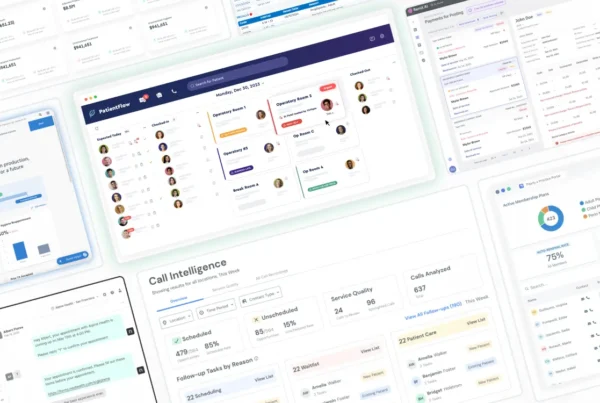
The company structure of your organization is essential to the success of your SaaS sales pipeline. Implementing the right company structure for your SaaS business can help avert numerous common issues. For example, it can prevent employees from engaging in unproductive activities that waste valuable time and resources. Given that launching a product is inherently challenging, it’s vital to maintain employee and management morale by ensuring your company structure aligns with your size and organizational objectives.
Utilizing a SaaS organizational chart can effectively maintain order and keep project milestones on track. The choice of company structure for your organization follows established guidelines based on the size of the company. This is advantageous because it saves you from having to create a new approach from scratch. By adopting best practices tailored to your specific situation, you can manage your company’s growth while maintaining a startup-like structure during its early phases. Choosing the appropriate company structure is crucial for fostering healthy growth, whether for startups or more established companies. Adjustments in company structure can be made at each stage of your business’s development.
What Is a SaaS-Based Business Model?
To thrive, a startup SaaS company must strike a balance between its product goals and the administrative functions that support customer success. One aspect often overlooked is the onboarding process for new users, which is integral to the SaaS model. For a SaaS business to flourish, it’s essential to have a well-thought-out strategy for attracting and retaining customers. The growth of your SaaS offering hinges on users’ ability to access and utilize your subscription services effortlessly.
Adopting the SaaS business model presents numerous advantages:
- Recurring Revenue: Monthly or annual billing creates a consistent income stream.
- Customer Retention: Paid subscription tiers help retain customers and encourage upgrades.
- Continuous Improvement: Regular updates foster customer loyalty and provide opportunities for feedback.
- Actionable Metrics: Key performance indicators, such as Customer Acquisition Cost (CAC) and Monthly Recurring Revenue (MRR) , inform business decisions.
- Churn Rate Monitoring: Keeping track of churn helps identify areas needing improvement in customer engagement and retention.
A well-implemented SaaS model can drive consistent growth by leveraging recurring revenue and a customer-centric approach.
The Need for an Organization Structure in Your SaaS Company
Founders of a SaaS company face significant financial risks when launching their venture. A thoughtfully designed organizational structure is essential for mitigating these risks, especially when outside funding is often limited in the early stages. Establishing a solid framework allows you to manage growth effectively and allocate resources where they’re most needed. As the business expands, you’ll likely find a demand for more team members across various roles, including marketing, sales, and customer support.
It’s crucial to outline roles and responsibilities according to specific functions, departments, or target markets. Here are key steps to ensure a well-structured organization:
- Define Roles: Clearly articulate the responsibilities and goals for each position.
- Document Expectations: Provide written guidelines for each new hire.
- Optimize Resources: Establish a balance between inputs (like resources and labor) and outputs (such as revenue and client acquisitions).
- Review Priorities: Regularly assess resource allocation against evolving company priorities.
- Plan for Challenges: Develop contingency plans and implement feedback mechanisms to identify potential bottlenecks.
Before Investing in Your SaaS Product
Before committing significant financial resources to your SaaS product, it’s vital to ensure that all necessary support systems are in place for a successful launch. Even the most innovative software can fall flat without effective user engagement and support. Therefore, it’s essential to prepare for customer needs and anticipate any potential issues that may arise post-launch.
The sales team should collaborate closely with customer support to improve retention rates. It’s equally important for all departments to be aware of vendor management and client relations. Furthermore, investing too heavily in one area at the expense of others can strain your operational budget. Legal support is crucial for formalizing client interactions and ensuring compliance with privacy regulations. All these considerations contribute significantly to the pre-launch success of your SaaS product.
SaaS Org Chart: Structuring Your SaaS Company
Establishing a SaaS organization involves starting small and gradually scaling operations as the company grows. The number of employees is a key indicator of size, but the growth stage also plays a significant role in determining structure.
Type 1: 5 – 20 Full-Time Employees
At this initial stage, your company may operate with a minimal team, often consisting of the founders wearing multiple hats. Typically, three founders may cover various roles: one might oversee marketing and sales, another could focus on IT and product development, and the third would handle administrative tasks. As the business expands, it becomes essential to hire full-time staff to delegate responsibilities effectively.
Type 2: 25 – 50 Full-Time Employees
As your company grows, the need for delegation becomes apparent. Founders must learn to entrust responsibilities to new hires in key areas such as marketing and product development. This transition can be challenging, as founders often feel attached to their roles. However, establishing independent teams is crucial for meeting customer demands and maintaining operational efficiency.
Type 3: 50 – 100 Full-Time Employees
When your organization reaches this size, it becomes necessary to establish C-suite roles. Positions such as Chief Technology Officer (CTO), Chief Marketing Officer (CMO), and Chief Financial Officer (CFO) help to streamline decision-making and management. Each department needs a leader who can focus on strategic growth and ensure alignment with overall company goals.
Type 4: Over 100 Full-Time Employees
At this stage, your company may introduce additional leadership roles, such as vice-presidents and department directors. These positions often manage specific functions like sales, marketing, and customer success, reporting to the relevant C-suite executives. This hierarchical structure ensures that all levels of the organization are aligned and that the company can scale effectively while managing various teams and projects.
Structuring Sales in the SaaS Industry
A well-structured sales team is the backbone of SaaS success. To support growth, your sales and marketing teams need real-time access to data, such as leads, conversions, and churn rates. Setting clear metrics for performance and onboarding new talent quickly is essential. Here are some strategies for structuring SaaS sales teams:
- Growth Preparation: Prepare templates for rapid onboarding and customer management.
- Performance Tracking: Use KPIs to measure individual and team success.
- Customer Alignment: Match sales reps with customers based on expertise and needs.
These approaches ensure your team is prepared for rapid expansion while meeting customer expectations.
Who Should Be My First Hire for My SaaS Business?
The first hires for your SaaS business are critical to its future success. Sales and marketing roles are essential even before your customer base starts to grow. A Customer Success Manager is equally important, helping manage customer onboarding and retention.
Each founding member should focus on expanding their respective departments. Building out sales and marketing teams early helps generate leads, while a product manager ensures the software is ready for market launch. Start with a growth mindset, focusing on long-term scalability.
Conclusion
Organizing your SaaS company’s structure effectively from the start sets the foundation for sustained growth. By understanding your business model, planning for the future, and carefully structuring your team, you can create a company that scales smoothly while meeting customer needs. As your SaaS company grows, adjusting roles and responsibilities will ensure efficiency and success.
Ready to Build Your Own SaaS Success Story?
At Unoiatech, we specialize in helping businesses bring their SaaS vision to life. Whether you’re looking to scale, optimize, or launch from scratch, our team has the expertise to make it happen. Want to see how we helped one of our clients build a $900M SaaS product? Check out our case study here and discover how we can do the same for you.








